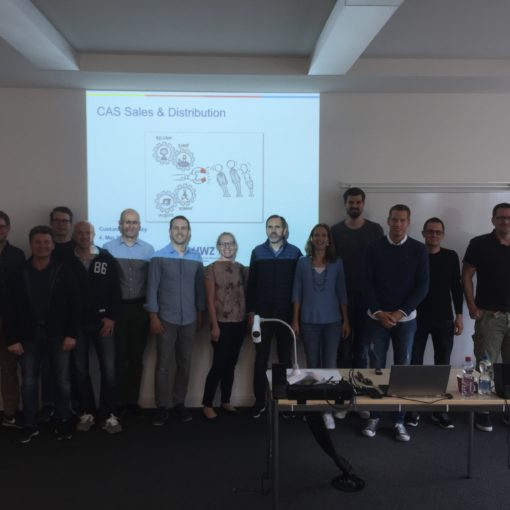In today’s business landscape, leaders increasingly recognize the importance of customer centricity, yet many struggle to measure its impact on business performance. While most organizations track metrics like Net Promoter Score (NPS) or customer satisfaction, these indicators alone fail to capture the true return on investment of customer-centric initiatives.
THE MEASUREMENT CHALLENGE
Traditional financial metrics often don’t adequately reflect the value of customer relationships. At the same time, customer experience metrics rarely demonstrate direct connections to financial outcomes. This gap creates a significant challenge for executives seeking to justify investments in customer centricity initiatives.
WHY TRADITIONAL METRICS FALL SHORT
Most organizations rely on a limited set of metrics when evaluating customer relationships:
Customer Experience Metrics
- Satisfaction scores: While useful for understanding general sentiment, these scores don’t necessarily correlate with customer behavior
- Net Promoter Score (NPS): Though widely adopted, NPS alone doesn’t capture the complexity of customer relationships
- Customer Effort Score (CES): Focuses narrowly on ease of interaction rather than overall relationship value
Financial Metrics
- Customer acquisition cost: Addresses only one aspect of the customer lifecycle
- Revenue per customer: Fails to account for profitability differences
- Customer lifetime value: Often calculated using flawed assumptions
What’s missing is a comprehensive measurement framework that connects customer-centric activities directly to business outcomes.
THE INTEGRATED MEASUREMENT FRAMEWORK
A truly effective measurement approach requires integration of four key dimensions:
1. Customer Relationship Quality
Beyond satisfaction and loyalty metrics, organizations should measure:
- Relationship depth: The extent to which customers engage across multiple touchpoints
- Share of wallet: How much of the customer’s total category spending goes to your organization
- Advocacy impact: The tangible value generated through customer recommendations
- Relationship resilience: How well relationships withstand service issues or competitive offers
2. Customer Relationship Economics
This dimension focuses on the financial aspects of customer relationships:
- Customer-level profitability: Understanding variations in profitability across the customer base
- Investment efficiency: How effectively resources allocated to customer relationships generate returns
- Relationship development costs: The true cost of strengthening existing relationships
- Customer portfolio balance: The distribution of relationship value across customer segments
3. Organizational Enablers
Measuring the organization’s capabilities for customer centricity:
- Information quality: The accuracy, accessibility, and actionability of customer data
- Decision-making processes: How consistently customer insights inform strategic decisions
- Cross-functional collaboration: The effectiveness of teams working together on customer issues
- Resource allocation: How well resources align with customer relationship priorities
4. Long-term Value Creation
Assessing sustainable value generated through customer relationships:
- Innovation input: How customer insights drive product and service development
- Market adaptability: The organization’s ability to adjust to changing customer needs
- Brand equity development: How customer relationships strengthen brand value
- Ecosystem expansion: The growth of complementary partnerships driven by customer needs
IMPLEMENTING THE FRAMEWORK
Organizations seeking to measure customer centricity more effectively should:
- Audit existing metrics to identify gaps and redundancies
- Align measurement with strategy by focusing on metrics that support strategic objectives
- Create balanced scorecards that integrate all four dimensions
- Establish clear ownership for each metric with associated accountability
- Build analytical capabilities to identify correlations between metrics
- Develop reporting formats that make insights accessible to decision-makers
THE BUSINESS CASE FOR CUSTOMER CENTRICITY
When measured properly, customer centricity investments typically yield returns in three key areas:
Revenue Growth
- Increased customer retention
- Higher cross-selling and up-selling success rates
- More effective customer acquisition through referrals
- Premium pricing opportunities based on superior experiences
Cost Reduction
- Lower customer service costs through reduced complaints
- More efficient marketing through better targeting
- Decreased costs of poor quality through customer-informed improvement
- Streamlined product development based on customer insights
Risk Mitigation
- Greater resilience during market disruptions
- Reduced vulnerability to competitive threats
- Earlier warning signals about emerging issues
- More stable cash flows through stronger customer loyalty
CONCLUSION
Organizations that develop sophisticated approaches to measuring customer centricity gain a significant competitive advantage. By moving beyond simplistic metrics to an integrated measurement framework, leaders can demonstrate the comprehensive business impact of customer centricity and make more informed decisions about relationship investments.
The most successful practitioners recognize that measurement is not merely about proving value – it’s about continuously improving it. When organizations measure what matters in customer relationships, they inevitably strengthen them.




